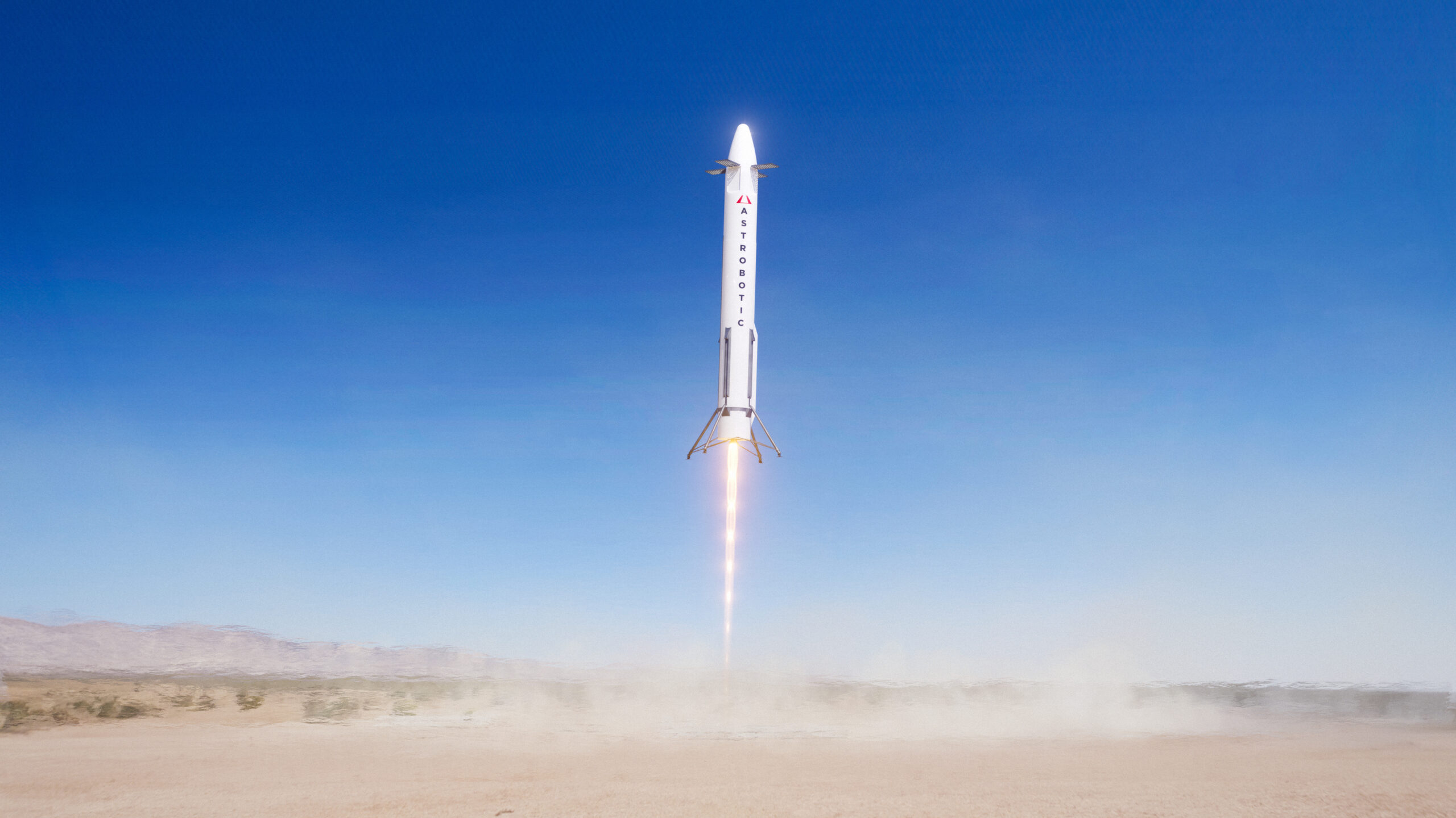Products You May Like
WASHINGTON — Astrobotic, a company that develops vehicles for space exploration missions, is making a strategic move into the defense sector with its Xogdor reusable rocket, designed to test payloads at the edge of space.
Masten Space Systems, a company acquired by Astrobotic in 2022, started developing the suborbital Xogdor vehicle in 2021. The rocket, expected to debut in 2025, is funded by a NASA contract, “but we are also looking at applications to support the Department of Defense,” Sean Bedford, Astrobotic’s director of business development for propulsion systems, said in an interview last week at the Space Symposium in Colorado Springs.
Astrobotic’s existing Xodiac and Xombie suborbital rockets fly from Mojave, California, and the company is in discussions with the Air Force to fly Xogdor from Edwards Air Force Base.
The company earlier this month announced it signed a cooperative agreement with the U.S. Air Force Research Laboratory (AFRL) Rocket Propulsion Division, based at Edwards. Astrobotic and AFRL will collaborate on the development of liquid rocket engine technologies and flight testing opportunities.
Bedford said Astrobotic plans to offer the liquid-fueled Xogdor — 27 feet tall and about three feet in diameter — to the U.S. Air Force, the Missile Defense Agency and other defense organizations for use as a testing and research platform, and for transportation. “We think the opportunities to leverage a platform like this are extensive and they haven’t fully been explored.”
Defense applications
Xogdor’s reusability translates to faster turnaround times between missions, enabling more frequent testing opportunities, he said. Potential applications include suborbital atmospheric research, testing of missile defense systems and hypersonic weapons, and point-to-point cargo delivery. Xogdor’s supersonic capabilities could be useful for simulating the re-entry profiles of shorter-range tactical missiles.
While the reusable rocket revolution has been spearheaded by SpaceX and its Falcon 9 orbital launch vehicle, the concept of reusable suborbital rockets like Astrobotic’s Xogdor has received comparatively less attention, Bedford said.
“We anticipate that there are going to be a number of different variants of this vehicle. Right now we’re developing Block 1 and expect to fly it in 2025,” he said. “We anticipate an alternative to sounding rockets for Block 2 that’ll be primarily focused on getting up above the Karman Line to relevant altitudes, being able to provide access to the space environment, but also to do some pretty cool things that you can only do with liquid rockets.”
Rocket cargo
The military’s “rocket cargo” program is a major opportunity, Bedford said.
“Xogdor’s predecessors, including our Xodiac and Xombie rockets, have executed short-range point-to-point flights since 2009,” he said. But these were low-speed hops of several hundred meters. Xogdor’s initial flight qualification campaign will include a progressive series of multi-kilometer point-to-point flights to demonstrate its approach and landing operations, he added.
“Starting with the Block 2 variant, Xogdor vehicles will be capable of supersonic flight speeds, ranges of several hundred kilometers, microgravity environments, and access to suborbital space.”
While most modern sounding rockets use solid propellant, Bedford said Astrobotic hopes that Xogdor will become the first fully reusable liquid-fueled platform for sounding rocket missions.
